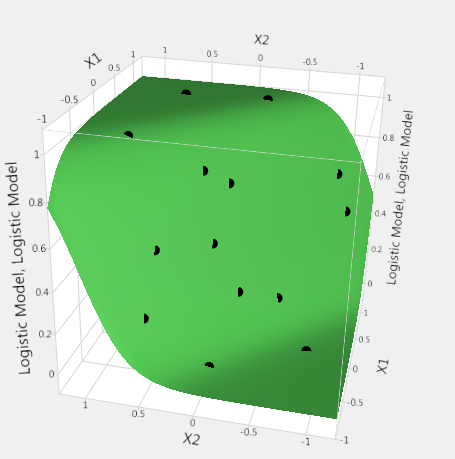Nonlinear Designs
Use a nonlinear design for a response that is nonlinear in the unknown parameters. A nonlinear design places design points in areas that are key to fitting the nonlinear model. Although you could use an orthogonal design that is optimal for a linear model, such designs, in general, do not place design points in locations that minimize the uncertainty (or maximize the precision) of the estimates of the fitted parameters.
The efficiency of a nonlinear design depends on the values of the unknown parameters. This creates a circular problem in that to find the best design, you need to know the parameters in advance. JMP uses a Bayesian approach to construct a nonlinear design that maximizes the average efficiency over specified ranges of the values of the parameter. To properly specify these ranges, you must have some insight about the system of interest.
Nonlinear designs offer these advantages compared to designs for linear models:
• Predictions using a well-chosen model are likely to be good over a wider range of factor settings.
• It is possible to model response surfaces with complex curvature and with asymptotic behavior.
Figure 24.1 Design Points for a Nonlinear Model
